This wound up being an unexpectedly stressful week as a family emergency had me racing back from the city on Tuesday. For the rest of the week, i was splitting my time between working remotely and being over at the hospital as situation was evaluated and treatments were worked out. It really wasn’t a bit of fun. Hopefully, though, the worst should be over now, and we can get back to business as usual around here. And fortunately, having spent so much time working remotely during the lockdown, it was relatively familiar territory and didn’t keep us from sending a bunch of books (including UNCANNY X-MEN #1) to the printer.
So now I can kick back, relax, let all worry and strife fade away, and devote four hours or so to pounding out another one of these Newsletters for your Sunday entertainment. And just as a reminder: if you enjoy these things, donate a few dollars to the Hero Initiative to help out comic book creators in need. It’ll make justifying all of the effort I put into these things a little bit easier if you do. Thanks!
The amount of questions that have been pouring in continues to increase as we get closer to X-Men go-time. In particular, fans who are anxious to convey their opinions on one favorite character or another, or to complain about something they’ve read or seen that they do not like. As I said last time, I’m going to be scaling back from just how many such questions I answer here, but I do read them all, so your messages are coming across, whether I agree with them or not.
Jeff Ryan
Thanks to the letters page of the just-posted-on-Marvel-Unlimited New Warriors #75, I found out Dan Slott wrote a never-published inventory issue of that series. Did that script get pencilled and/or inked? Is it still kicking around?
That story wasn’t commissioned by me, Jeff, but rather by my predecessor Rob Tokar. But I remember it. It was titled something like “Bluffs, Buffs and Toughs” and it revolved around the Warriors playing a game of poker in their Crash-Pad headquarters and reflecting on other recent adventures. I seem to think that, while Dan dialogued it, it may have been Fabian Nicieza who plotted it, but I’m not certain of that. Manny Galan penciled it, that I know. And I might still have copies of some or all of it in my NEW WARRIORS files—as might Dan. But I don’t know that either of us is in any hurry for it to see the light of day.
Evan “Cool Guy”
Ok so: In House of X it's revealed that long ago Moira and Xavier met up and she told him to read his mind, at which point all sorts of secrets from her past lives were revealed. But then, in Marvel continuity (in stories actually written long before House of X) they went on to have all their regular adventures that we remember so fondly. So my question is, in scenes of just Charles and Moira talking alone from years past, why are they "pretending" that Moira isn't a mutant, and not mentioning all the other revelations and plans that came from that fateful mind-reading?
Obviously it's because the Moira twist hadn't been written yet, but I'm not sure if an in-universe answer to this mystery has been proffered.
I can’t speak to what was spelled out exactly where during the Krakoa era, Evan—my working familiarity with those books is just not that good. But my understanding is that they either went through all of the necessary motions to preserve the timeline of events that Moira remembered. And they may have used Xavier’s psychic abilities to seal away those memories until such time as they were ready to execute their Krakoa plan. This is how Jordan and Jonathan explained it to the rest of us, I believe.
Gus
If you're getting copies of all the Marvel comics printed each month, and presumably have been for decades, what do you do with them all? Do you have a massive underground air-controlled lair? Do you donate a bunch of them to charities? Are they in stacks throughout your house to create additional rooms and halls, or a labyrinth?
These pictures are several years old, but they give you the basic sense of things. When I bought my current house, I allocated a room for the comics and another room for the collected editions/books. So when I say that I’ve read more comic books than you have, believe me.
Alison Cabot
Emma has three versions of her origin story: Generation X #24, Emma Frost solo (2003), and X-Men Origins: Emma Frost (2010). I wanted to know if all of these stories were canonical because they were all covered at some point. I also wanted to know if they happened at different times in Emma's life or if it's just a big timeline mess.
I’m not sure what the Handbook team has done to integrate all of these facts and situations, Alison, but that’s where I’d start looking for answers. But I’d say that all of it is canonical, and any discrepancies would simply have to be massaged through, as is often the case in a fictional universe that has existed for as long as the Marvel U. has.
X of Alex
This week saw the release of Uncle Scrooge and the Infinity Dime, the first duck comic of what seems to a wave of them. The editor on the issue is Mark Paniccia.
With a licensed character like Uncle Scrooge, how does an editor get assigned to edit the book? Is it whoever's most willing? Most available? Did Mark have to outwrestle you and/or Mr White and Ms Brunstad for the gig?
I was undeniably jealous of Mark Paniccia for getting to edit that UNCLE SCROOGE book, Alex, make no mistake about it. But having largely worked on licensed properties for the last couple of years, Mark and his team are used to the challenges of interfacing with rights-holders and how to navigate approvals and changes and corrections effectively. So he was the very best person to be overseeing that project, even though I would have had a lot of fun doing so.
JV
Speaking of 'comics about comics' - the What if series seems to fall under that category. Do you feel a series like 'what if' can be relevant and interesting to today's readership?
The recent animated series was brilliant, and some of the classic stories from the 70s and 90s series still stay with me - even though they are for the most part comic book archaeology.
I think it all depends on the story that you tell, JV. There have definitely been WHAT IF stories that were very much concerned with the minutia of continuity, and those tend to be the ones that don’t work as well, either for a mainstream audience but often for the hardcore fans either. On the other hand, there are a bunch of WHAT IF issues from that first run that I think are truly great, and most of them use the conceit of the concept relatively liberally. They’re more concerned with telling you something about who the characters are.
Joel Zorba
apart from the fictional country of Wakanda, there are practically no African characters, Mediterranean Africa and Sub-Saharan Africa. And there's so much on that continent, so many cultures, so many people who love Marvel characters. There are also so many magnificent gods and goddesses who could become Marvel characters, just as there have been Norse and Greek gods like Thor and Hercules. There's even an African thunder god king and many other god kings and queens in different African pantheons. So why are Africa, Africans and African gods still so ignored?
It’s like any similar situation, Joel: a lack of familiarity with the cultures of which you speak and a lack of interest in exploring those pantheons. Each writer has things that they’re interested in exploring, stories that they’re interested in telling. And it’s a big world, with lots of different people and stuff in it. So there’s absolutely no reason why we couldn’t do more with African characters. But we really need creators who are familiar with those cultures and interested in developing those characters to do so effectively. To a certain extent, this is what initiatives like our MARVEL VOICES books have been about, bringing in a wider array of creators and giving them the space to tell a broader range of stories about characters of different backgrounds.
Poratal
I don't understand why Jean grey/ Phoenix is only in one book, her own solo when Storm is in three book: Ultimate Black Panther, her own solo and Avengers. She deserves all, she is the heart of the X-men, without her x-men are nothing. I don't understand why marvel doesn't her what she deserves. she deserves her own solo as she and Storm has got, but she deserves to be included in a x-men book and even be the leader of the team. She is powerful, clever, strategical, she mother and father of Hope. Why hasn't she been included in another team book like Storm?.
Jean is in one book at the moment because that’s what we decided, Poratal, simple as that. That may not be a solid-state situation, but for now, that’s where the playing field begins.
Chris Sutcliffe
is there any kind of style guide at Marvel for solicits? Where does the variation tend to stem from?
Each editor is responsible for their own solicit copy, Chris, with our sales team occasionally making tweaks and alterations. So every editor approaches it slightly differently. Speaking for myself, I request solicit copy from my writers for each issue, and then I may massage it if I feel some key point is being overlooked or not put across effectively.
Axel
Are there any plans for the upcoming 45th anniversary of the Phoenix saga next January?
Yes, Axel, though not in January. Giant-Size ones.
Kevin Hines
Question: I’m really enjoying the Goodbye Hello column on your blog. I’m curious for a list of the books you didn’t cull when making all these cuts.
This is a really good question, Kevin, and one that I didn’t know the answer to offhand. So I went back into my old logs, and while the information peters out shortly after that culling, I think that I can say confidently that among the books I continued to read at that time were NEW TEEN TITANS, BATMAN AND THE OUTSIDERS, LEGION OF SUPER HEROES, THRILLER, THE SPIRIT, NEXUS, GRENDEL and CAPTAIN VICTORY. And I was continuing to sample a wide assortment of new books from smaller outfits, such as AMERICAN FLAGG, STARSLAYER, JON SABLE, E-MAN, SOUTHERN KNIGHTS, THE SURVIVORS, SILVER STAR, WARP, JUDGE DREDD, MARS, THE BADGER, DNAGENTS, JUSTICE MACHINE and so forth.
Antoine Malaab
I was recently re-reading the original Ultimate X-Men hardcovers and read an afterword by Bill Jemas. He notes that Marvel, before the Ultimate line, used to be stuck with four basic categories for doing "Teen-publishing" aka new stories that would not mess with continuity out of fear of upsetting the vocal/loyal adult fan base. 1) Untold Stories set in the past between issues 2) Adventures (based on the cartoons) 3) What Ifs 4) "Packs" - creating new 'kids' teams. Jemas goes on to say "Marvel Management had the real challenge of trying to look surprised when all those ... failed". It's been 20+ years since then, but do you find these to still be true? Is there anything else you feel could be added these days?
Ha, well that’s such a Bill Jemas comment, Antoine, at once arrogant and ignorant. I don’t think i would have agreed with his analysis at the time he made it, and I certainly don’t now.
Daisy May
I have some questions regarding a character that is liked by few and disliked by many: Kid Omega. A lot of fans grew up reading Morrison's New X-Men, others Aaron's Wolverine and the X-Men, Strain's Generation X, Thompson's West Coast Avengers and Percy's X-Force, including myself. So my first question his how as an editor do you deal with characters that have such polarizing readings and stories like Kid Omega? Especially since a lot writers have different readings on the same character. Does his publication history impact how new writers like MacKay should write him or as an editor you don't mind new and fresh takes? Can characters like Kid Omega change and transform with time?
I don’t think you can really attest to Kid Omega being “liked by few”, Daisy. As with any character we might choose to speak about, Quentin has his fans and supporters. And one of those is Jed MacKay, which is why Quentin is in the main X-MEN series. And if I see some potential in a character—and there’s almost always some potential in a character—then I really don’t worry that much about how the audience feels. Either the stories will make you care about the characters, or they won’t. As for Kid Omega, his history is his history, but nobody is simply the sum of all their yesterdays. Tomorrow is an infinite canvas upon which we can each write whatever we choose.
Harvey Hamer
I love those mini Poe Comics. Has Charles ever seen them?
He saw them just this week when I posted them, Harvey, and wrote me to tell me so.
Dylan D
Chris mentioned in a recent interview that he pitched a new contemporary X book to you. Why did you reject it?
I’m honestly not sure what Chris is talking about here, Dylan. I think I’ve had one conversation with Chris since taking over X-Men, and in that conversation, while he certainly let me know that he was available for stuff should an opportunity arise, that he wasn’t going to push anything before I’d gotten my head around the job and the landscape. It isn’t impossible that he tossed off some simple idea in that conversation, but I don’t remember it—and I wasn’t ready to get into any specifics at that point, so regardless of what it might have been, I wouldn’t have gotten into it with him. Maybe it was Jordan?
Matt Mcthorn
What would you say to an X-Men fan who's having a tough time giving this relaunch a shot? I think the creative teams for everything announced have been fantastic, but I have a lot of concerns about the editorial direction.
I have a lot of respect for your past work (several runs you've edited are all time favorites of mine), but based on things you've said here and in other interviews I think the things I like in X-Men are unlikely to get approved of with you as "Conductor of X". It all largely seems like a step backwards, and as someone without any nostalgia for the 90's I'm finding it hard to get excited. Will there be anything forward looking in this relaunch?
Well, you aren’t under any obligation to check out anything, Matt, though obviously we hope that you will. So if you like the creative teams, it might be worth having some faith in them and their skills and seeing what it is that they actually produce rather than the imaginary version that you’re seeing in your mind’s eye. Or not, it’s entirely up to you. I’d also say this: a whole lot of people seemed to love X-MEN ‘97 and while that series was chock-a-block full of nostalgia, that was far from teh only thing that they were doing. It’s possible to do a bunch of different things at the same time. So I hope you join us, but if you don’t, we’ll see you again at some future moment.
Shaun
With Jed MacKay writing both X-Men and Blood Hunt, I thought for sure that the Sevalith vampires that were introduced in the X of Swords would make some sort of appearance in the event. Now with that not being the case, is there a reason for that?
We didn’t think of it, Shaun, and I don’t know that we would have had space for it even if we did. We were already pretty cramped at only five issues.
Kyle Evans
1. How important is it to make sure that the entire line is followable? With Avengers, it's easy to just buy the two or three Avengers titles that come out in a given month, but the X-Men line is obviously much bigger. Is it a priority to keep the line a certain size so that fans can get by with just getting a handful of comics a week?
2. One thing I liked about the Krakoa era was the reading order in the back of those comics. Will you be offering something similar to these new X-Men books, especially given how spread out they all seem to be in-universe?
Because we’re making each of our books its own specific and individual thing, Kyle, it shouldn’t be necessary for somebody to follow absolutely everything—though we certainly hope that readers will be into it all enough to want to read as much as they can. But it’s an expensive proposition to follow everything. So might I suggest giving those Chip Zdarsky BATMAN comics a rest, maybe?
We’ll have a checklist on our spanking new Bullpen page, but because our books are designed to function independent of one another (while still taking place in an overall shared story-space) there isn’t rally any need for a reading order every issue. You can read whatever you like just as soon as it comes out, and you should be fine.
Chris Lister
This is something that has been bothering me for a while: regarding Magneto's age. You mentioned that FF#1 is always "15 years ago". Magneto has been de-aged a few times. But since his origin is tied to WWII, he still could not have been younger than 70 even all the way back in X-Men #1. And given his long history with Charles Xavier prior to the founding of the X-Men, they must be close in age. How do you think this problem can be resolved?
I don’t think that it can, Chris. You simply have to accept the fact that Magneto’s mutation somehow keeps him young and vital and gives him a super-long lifespan, just as Namor’s does. And you need to accept that when he first met Charles Xavier, Magneto was at least twice his age, even if he didn’t look it. We can’t move World War II and we can’t divorce Magneto’s backstory from the Holocaust, so there it is.
Steve McSheffrey
Chesty had me thinking of goofiness like Assistant Editor's Month. We'll probably never see linewide fun like that again. Any chance tho' of Impossible Man making a return visit?
I think the reason you won’t see another Assistant Editor’s Month sort of goofball event, Steve, is that the sales on the original Assistant Editors Month were terrible—it was a real bomb. So there might be individual stories that are somewhat more goofball and silly—I’m thinking in particular of teh recent issue of FANTASTIC FOUR in which Ben and Johnny became competing cashiers at a supermarket—but probably nothing more widespread than that, an occasional palate-cleanser. And I’d be more likely to use the Impossible Man in FF than in X-MEN, I think.
Callie
Do you think there'll ever be another Marvel comic with an author's tenure that lasts as long as something like Claremont on X-Men or even Bendis on USM? And if you had to guess, what character would you say it could be?
I couldn’t begin to guess what it might be, Callie—especially because it might be written by somebody who hasn’t even started working for Marvel yet. But it isn't out of the question, it’s just somewhat unlikely. The most recent one was probably Dan Slott’s ten years on AMAZING SPIDER-MAN.
Iron
I'd love to hear your thoughts on the idea of Phoenix joining a classic Marvel team - Avengers or perhaps Guardians of the Galaxy.
Phoenix fans were out in force this week for whatever reason. I think that could be interesting depending on teh circumstances, Iron. But as we’re doing that already with Storm, I don’t think it makes sense to double-dip at the same time.
Behind the Curtain
.Below you is an image painted by the great Wally Wood that appeared in the TV GUIDE issued for programs being broadcast from March 23-29, 1968. it illustrated an article concerning how the new breed of super hero cartoons were pushing the funny stuff out of Saturday mornings. It’s a cool piece because Woody was at least passingly familiar with all of these characters.
And what the hey, here’s the full text of the article in question:
Bugs Bunny has been relegated to another day. You’ll find neither hide nor hare of him around TV’s Saturday morning cartoon ghetto. And the old carrot-cruncher—a Saturday superstar since TV’s salad days—was shifted with nary an answer from the networks to his final pleading, “What’s up, Doc?” The networks could have told Bugs what was up, though. And in two words: Weirdo Superhero.
The Weirdo Superhero is the new look in cartoon characters. Super-king-size in brawn and just about as freakish as anything you’ll find on a sci-fi dust jacket, the weirdies have virtually taken over Saturday morning network television. And Saturday’s cartoon-loving child seems to be gobbling up the ghoulies like M & M’s.
In case you haven’t toured the weekend-morning dial lately, here are portraits of a few of the new breed of Weirdo Superheroes.
The Fantastic Four are led by scientist Reed Richards, who stretches like taffy. The queer quartet includes Reed’s wife, Sue, who keeps vanishing into thin air; teen-ager Johnny, who flames up like a can of Sterno; and The Thing. The Thing’s thing is to be ugly, which, since he resembles a demolished Edsel, isn’t hard.
Spider-Man is a born loser named Peter Parker. Beset with job worries and usually bedded down with a cold, Peter nevertheless is compelled to slip into a grotesque spider suit to polish off villains.
Birdman resembles a tarred and feathered Charles Atlas with wings. Saved from a fiery death by a sun god, Birdman flies around, pulverizing the baddies with solar power.
Space Ghost, the only bona-fide spook in the crowd, is a space-cruising crime fighter. But thanks to a magic belt which renders him invisible, this animated apparition is out of sight a lot of the time.
Super President is a gas—that is, when he’s not transforming himself into solid rock or something. But whatever shape the chief executive is in, he has a dandy way of dealing with villains. He just zooms off and beats the tar out of them.
Those are just a few of the weirdies. There are plenty more. Practically three-quarters of the cartoons being aired on all three networks fall into the Weirdo Superhero category.
And co-starring with the Weirdo Superheroes, you’ll find an equally spooky bunch of Supervillains. There’s Professor Stacordo, for instance, who looks like Fu Manchu and careens around on a flying monster, yelling “Kill! Kill!” Later on you’re apt to run into a demented midget and his army of menacing Lilliputians or a platoon of crazed, hyperthyroid beasts of every species. Then there’s always Spider Woman (no relation to Spider-Man). She gets her jollies slicing up people, aided by an army of garden-shear mechanical spiders.
The Weirdos—Superheroes and Supervillains alike—have catapulted TV cartoons into a multimillion-dollar business. The top-rated shows can pull in as many as 14,000,000 kids, making it very attractive to sponsors, who happily pay up to $9750 a minute to sell their wares. The networks expect to take in over $50,000,000 this year, while the cartoon factories haven’t had so much work on their hands since the heyday of the movie-house cartoon. For instance, Hanna-Barbera, the cartoonery which grinds out more than half of these shows, keeps 300 employees working year-round. Saturday morning has become a Grand Guignol gold mine.
To understand how the networks got on this weird kick, you must realize that Saturday morning TV wasn’t always the bonanza it is today. Two years ago, in fact, the networks were filling the morning with reruns of shows like Lassie and Dennis the Menace in addition to cartoons such as Mighty Mouse and Alvin. The cartoons were grabbing most of the kids, so the networks decided to capitalize on them. The cartoons in stock—most of them made for movie theaters—were getting low. They needed something new. Only what?
The “what” emerged soon enough. The networks and the cartoon makers had for some time been aware of the popularity of comic books in general and superheroes in particular. Says Allen Ducovny, who produces the Superman-Aquaman show: “Kids have always read comic books and played war games. It seemed natural to put superheroes into an action-adventure format.” Ed Vane, ABC’s daytime chief, conceived of a cartoon which would be “full of action and far-out,” to accommodate today’s space -conscious children. Says Vane: “Children today are highly sophisticated. They don’t suspend that sophistication on Saturday morning.”
It’s here that the influence of Marvel Comics came into play. Marvel has become champ of the comic-book game (50,000,000 books a year, with a high number of them selling to college kids) by introducing the Weirdo Superhero. “Superheroes had been around for a million years,” says Stan Lee, Marvel’s editor and art director. “We revitalized them.” For starters, they gave the heroes hang-ups. “So what if a hero is the strongest being on earth?” Lee explains. “Doesn’t he also have acne, sinus trouble and problems dating girls?” Marvel also introduced another innovation in superheroes: the ugly hero, a la “The Thing.” “People can identify with someone who’s not beautiful,” Lee thinks. “You say, ‘That guy could be me.’ But you still feel superior to him.”
The first Weirdo Superhero to make a substantial splash in the Saturday A.M. lineup was Space Ghost. That was two years ago, on CBS. According to Allen Ducovny, “It set the industry on its ear.” Predictably, NBC and ABC jumped on the Weirdo Superhero bandwagon—and the era of the weirdies began. Says Marvel Comics’ managing director, Chip Goodman: “The networks know they’re on to something big.”
The networks have also inherited 3 few unexpected headaches. There are many—parents, teachers and psychologists—who vigorously condemn the Weirdo Superhero cartoons. TV GUIDE has received a flood of protests and the networks likewise admit to receiving complaints (although they claim not many). NBC’s daytime boss, Larry White, minimizes the tempest thusly: “When we were kids, our parents had no idea what we were seeing in the movies on Saturdays. But because we go into the living room, parents are suddenly critical.”
The criticisms have been noticed by at least one sponsor—Kellogg’s, which next season will break up the networks’ Saturday morning procession of Weirdo Superheroes by sponsoring a “wholesome” weekly variety hour for children.
One of the major complaints is about the violence in the current shows. White, however, maintains, `The shows are not violent. Violence always implied. It occurs off-camera. There are no dead bodies around.” Which, to a degree, is true. The actual physical contact — i.e., a sock in the jaw, a hit on the head—is never seen. What is seen is the action immediately preceding and following the violent action. But whether omitting a few frames of film dispels any notion of violence is doubtful at best. Says Chip Goodman: “The violence is still there. It’s just tempered a bit.”
Granting, then, that the violence exists, a larger question looms. And it’s one which concerns many parents. Does a repetitious display of fictional violence have a psychological effect on children?
There are two prominent schools of thought on this issue. One is represented by Dr. Wilbur L. Schramm. Fri his study “Television in the Lives !sf Our Children,” Dr. Schramm con-eludes that “the kind of child we send to television, rather than television itself, is the chief element in delinquency.” Dr. Schramm’s study further sites: “The roots of delinquency are much lower and broader than television. They grow from the home life, the neighborhood, and the disturbed personality. The most that television can do is to feed the malignant impulses that already exist.”
Opposing Dr. Schramm’s findings is Dr. Fredric Wertham, who for years has been warring against violence in comic books and on TV. He maintains that when an environment tolerates violence, violent behavior is apt to happen. Dr. Wertham told TV Guide: “Children want to reason. However, they need raw materials—models—on which to build their acts. Television—and its display of violence—comes to the child with adult approval. In cartoons, a child believes the matter-of-fact hitting going on is a proper course in settling differences. It’s important to realize that cartoons are not fantasies to children.”
Dr. Wertham adds: “One cannot, of course, single out TV as the sole contributor to violent behavior. Nor can one single out cartoons. Both are part of a broad spectrum which has made a fetish of violence.”
Each of the two schools of thought has its supporters. Proponents of Dr. Schramm’s theory would doubtless argue that countless generations have been nurtured on fictional violence without an appreciable number committing overt acts of violence. As for Dr. Wertham’s position, it is significant to note that at a recent meeting of the American Psychiatric Association, 401 members answered a questionnaire entitled “What Do You Think About Violence?” Eighty-one percent of the psychiatrists and 74 percent of the non-psychiatrists agreed with Dr. Wertham’s opinion that violence cannot be explained entirely by the psychology of the individual and “when the environment tolerates violence, violent behavior is apt to happen.”
Understandably, it is Dr. Wertham’s side of the argument which troubles the networks and cartoon makers.
But many maintain that, as Allen Ducovny puts it, “Wertham has never told us how to construct a cartoon any other way.” Most cartoons have always, of course, been built around a chase or fight situation.
Ducovny points out: “Most of those old cartoons, which people thought were so cutsie-wootsie, were far more violent than anything that’s on today.” The height of brainless clobbering was probably reached in the postwar “Tom & Jerry” cartoons, the battling cat-and-mouse sagas.
Still, there are those who maintain that a return to TV of the earlier cartoons would be preferable to the Weirdo Superhero school of violence. Yet they may not really be asking for Bugs, Mickey, et al. What the animal cartoons had—and what the majority of the Weirdo Superheroes series conspicuously lack—is comedy. As one cartoonist explains: “When people yell, ‘Bring back Mickey Mouse,’ they’re really asking us to put comedy back into the cartoons.”
Some cartoonists are trying to do just that. But at present, they aren’t making much headway. One such cartoonmaker, Jay Ward (Bullwinkle), bemoans the onslaught of Weirdo Superheroes but shrugs: “They’re getting the ratings and that’s all the networks care about.” And although all three networks keep a slim stable of comical cartoons (Ward’s George of the Jungle is one), Ward doesn’t think the number is apt to increase.
At any rate, the Weirdo Superhero—born of the desire to fill the fantasy needs of today’s “sophisticated” child —lives on amid controversy. And the networks and cartoon makers, while staunchly supporting their moneymaking animated monster, nonetheless admit to sometimes wishing he weren’t around. Says ABC’s Ed Vane: “We’d love to give the kids Reading Room or A Day at the Planetarium. We’d be applauded by many—and watched by absolutely no one.”
But this was the last gasp of the Weirdo Superheroes on Saturday mornings. By 1969, new legislation had been passed prohibiting all manner of violence on children’s programming, and Saturday mornings became the home of Archie, Scooby Doo and the like instead. This lasted throughout the 1970s, with the few scattered action-adventure cartoons not being permitted to have much of either.
Pimp My Wednesday
We’ve got only a single release this week, from the hands of Assistant Editor Martin Biro:
BLOOD HUNTERS #3 continues the adventure of Dagger, Elsa Bloodstone and the White Widow by Erica Schultz and Bernard Chang while also serving up a pair of stand-alone stories: one starring Doctor Doom by Sean McKeever and Lan Medina and one focusing on the Hellcow by Josh Trujillo and Claire Roe. It’s about as unlikely a three-fer as you’ll ever see, but that’s what’s great about it!
A Comic Book On Sale 25 Years Ago Today, June 30, 1999
That headline is a bit of a lie, because this ELSEWORLDS 80 PAGE GIANT was supposed to come out on June 30, 1999, but the entire print run (apart from a couple of stray copies) got recalled and pulped instead. Which was a real shame, as this was a fun assortment of utterly bonkers stories that pushed the conceit of Elseworlds to their breaking point. But the problem was in a story produced by the great cartoonist Kyle Baker. His tale was “Letitia Lerner, Superman’s Babysitter” and it chronicled the difficulties that the title character experienced when Ma and Pa Kent went out leaving her in charge of the infant Kal-El—who proceeded to get into a world of trouble with his super-powers. The specific offending panel was one in which Superbaby had crawled inside a microwave oven. The Comics Code didn’t appear to have a problem with it, but DC bigwig Paul Levitz sure did, and he had the issue pulled back once he became aware of it. His argument was that this was repeatable violence and so DC couldn’t responsibly print it. I’m not sure that argument entirely holds water given how many fist-fights and assaults are in any given week’s DC books. But hey, it was Paul’s company, not mine, and so he had to make the hard calls that he felt he had to make. Who knows what pressure or scrutiny DC was then under? The fact that it had been pulled gave this Special an air of forbidden fruit, and demands that DC reverse its decision and release it went on for several years. The few existing copies were selling for ridiculous prices on eBay and the like, so there was definitely interest and demand. A few years later, DC acquiesced, with Baker making a few adjustments to the story to satisfy everybody. And it was an enjoyable read—though one that just about everybody stopped talking about the moment it came out. Because it was just a bit of wild fun, nothing earth-shattering at all. Still pretty great, though.
A Comic I Worked On That Came Out On This Date
AVENGERS #19 was released on June 30, 1999 and was the first chapter in our well-remembered four-part “Ultron Unlimited” storyline. After three issues away, during which time both he and writer Kurt Busiek were spelled by Jerry Ordway, George Perez returned for this four-parter and was a key element in its success. But even beyond George’s skill and enthusiasm, everything just seemed to go right on this story, and it’s probably the high water mark of the entire run. Much as we had previously done with Kang in AVENGERS FOREVER, one of the big objectives here was to wash a bunch of stink off of Ultron and restore him as a world-class menace capable of taking on the whole of Earth’s Mightiest Heroes. And it more or less worked (though I think Kang has held onto his reputation a bit more steadily over the intervening years.) We opened with Ultron having wiped out the entire population of the fictional nation of Slorenia, a place introduced in a pair of FORCE WORKS issues some time earlier. This cover was, according to George, his all-time record for the fastest cover he’d ever produced, besting his previous record set on AVENGERS #3 a year or so earlier. But it’s still very striking, although I’d approach the colors of the logo and the cover copy a bit differently today.
The Deathlok Chronicles
As usual, let’s begin with some thoughts from DEATHLOK co-writer Gregory Wright:
Gregory Wright:
I LOVE the cover. I wish the cover copy was more legible, but...I love the cover and the copy. I have to take a part of the blame for what Walter drew in this issue. I...in my foolish thinking that giving a new, raw, talented artist space to really show what he could do..without considering that he lacked storytelling skills...was a huge error in judgement on my part. I pulled out the original plot and just could not believe I gave him so much freedom to draw whatever he thought would tell the story. As Tom indicates here..he drew what may very well be the absolute WORST double page spread in history. I can't conceive of what made him draw it. The SPLASH page was supposed to be a full body shot of Deathlok kicking in a massive door, which would have been smashing into some Ultimatum Agents. Instead he drew an intense close up. Okay, it's a nice close up. The next pages will show everything I wanted...except...he drew a tiny little Deathlok figure and a DOOR flying across two pages. A door that took up almost ALL of the space. A DOOR. I wish we had a copy...it was unbelievable. Now...the book was REALLLLY late. So...Tom, trying to prevent it from being even later sent the page off to Jimmy to ink...and then he got an infuriated call from me...and of course we discussed how to fix this situation with a redrawn page without having to redraw the REST of the sequence that was all messed up. It was all drawn in a way that meant I'd have to rethink what was happening and then use more captions to describe what we are seeing. So Tom had to stop Jimmy from inking the page and wait for further instructions. Now...I wrote a pretty complicated action scene and there was no way it was every going to be drawn as I wanted unless I broke it down panel by panel. Learning curve for me there. But here Deathlok doesn't use any of his cool abilities I put into the plot, he just punches away like he's the Hulk. Sigh. Luckily the part that I am most interested in...the argument in Deathlok's head between Deathlok and Kelly...is still easily done. Another couple conversation with Walter about storytelling seem to sink in. Especially because I have some nice things to say about his drawing. Something I had not considered was that the GUEST stars...might interest the artist to draw more than the actual character of the book..Deathlok. Walter clearly loved drawing Silver Sable and certain members of the Wild Pack because he really focused on THEM more the Deathlok...and I really did like what he did with them...but the focus shifted too much to them. Again...MY fault for not breaking it down better for him. And I have to say the drawing was much better this issue and I really felt like we had something cool happening. Finally we get a good look at the Cyberwarriors I designed and Walter makes them look fantastic! Of course he focuses on Silver Sable fighting them and less on Deathlok...Walter gives us a FANTASTIC shot of the Cyberwarrior who's helmet is shattered, who will become Siege...and we've put Deathlok in a no win situation in which he's likely to be killed if he doesn't give control to Kelly to save them... So by the end I'm less irritated about that opening sequence and pretty excited about where the book is going...but it's really really late...and Jimmy calls me to tell me...he's quitting after the issue is done. And...I decide that the lateness of the book my dislike of coloring Walter's work (which is strange to me now as I was liking it more as a writer. Guess I just didn’t know what to do with it.) It was the last issue I would color as well. More conversations with Tom about how to solve the problem of needing a new inker...
Just a quick note here to say that I never thought about the fact that Walter seemed more interested in drawing Silver Sable and the Wild Pack, but you are absolutely right. Also worth mentioning that SILVER SABLE was probably the best, most consistent series that Greg wrote during his time at Marvel—it remained strong and enjoyable from the start all the way to the end of its run.
DEATHLOK #19 was scheduled to get an enhanced cover, as you see above. Enhanced covers had become a bit of a thing, a way to goose sales on specific issues. It had all started when INCREDIBLE HULK #377 used a fluorescent fifth color ink for its green background, and that combined with the debut of the combined, intelligent Hulk made it a huge seller that went back for extra printings. More specialty covers followed on different titles, most of which followed suit to one degree or another. By this time, this had become a regular ongoing program, with there being at least one Enhanced cover every month, if not more. And eventually, of course, that golden goose stopped working. For this cover, given that the lead character is an almost-entirely metal cyborg, as was the new character we were introducing in this issue, I opted to go for a full color full foil treatment. Despite how dull the image looks above (the book doesn’t scan well), the actual cover is quite vibrant. So this was pretty vibrant a cool, and it did give us a momentary uptick in sales, which we needed.
As Greg mentions in his comments above, this issue introduced a new character of his conception, Siege. Siege was the memories and personalities of John Kelly, the soldier whose body had been used as the framework of the Deathlok cyborg, downloaded into the body of one of the Cyberwarriors that Deathlok was fighting in this story. There was a bit of a push going on at this time where more fearsome versions of existing heroes were being introduced, to some fanfare and success. Whether it was Thunderstrike, War Machine, Carnage, Vengeance or whomever, the impulse was to replicate an edgier incarnation of the main character. I don’t know that we were specifically following in that direction with Siege, but that’s ultimately what he became. Ever since DEATHLOK had began as a series, we’d gotten a string of letters from older fans decrying the pacifistic Michael Collins and wanting the more hyper-violent Luther Manning to return. Introducing Siege was our attempt to placate these readers a bit without changing the central character.
As Greg mentions, last issue was also the last one inked by Jimmy Palmiotti. He had stuck things out for three books due to his close relationship with Greg and myself, but he simply wasn’t enjoying himself at all, and so told me that he was finished here. No acrimony, but now we needed to locate a new inker for the series. Kim DeMulder stepped in to handle this one, but he was too busy to take on the assignment regularly. What’s more, knowing that this issue was going to be a bit of a showpiece, I held the line for artist Walter McDaniel longer than was probably wise, which put our schedule into the crisis zone. We were going to need to bring in a fill-in art team on #20 as well, hopping Walter ahead to #21 in an attempt to catch up. So that team needed to be recruited as well. Spoiler alert: that process didn’t go well.
Monofocus
The big new drop this past week was the third season of THE BEAR on Hulu.It really is an amazing show, in the way it’s written, in the manner in which it’s shot, in its ability to create enormous tension in ordinary circumstances. I’ve especially been noticing the beauty of the camerawork in this season, the manner in which shots are framed and camera movements are syncopated to create a sense of beauty. It’s also a show that isn’t afraid to be experimental—the first episode this season is a fractured timeline episode in which we’re seeing scenes from throughout lead character Carmy Berzatto’s life all jumbled out of order, giving a bit of an internal biography of the character. It’s disorienting as heel if you aren’t paying attention (and more so for me because I hadn’t gone back to remind myself where the previous season had left off, so I was very much needing to make associations on the fly.) Especially good sound design and music selections as well. It really is a deep, rich show, one that rewards careful viewing and repeat viewing, and almost all entirely internal. I’ve been working through a single episode a day, though, as it’s a very strong sauce, and trying to binge it would likely overwhelm my senses a little bit.
Also back is THAT ‘90s SHOW, which is as dopey and formulaic as ever, but which I’m also chewing down an episode at a time. In some ways, this is my nostalgia for the classic sitcom format driving my viewing decisions, but it also helps that each one is only 23 minutes long and completely the opposite of THE BEAR, in that you don’t really need to pay any attention at all. But it’s familiar, and nostalgic in a way (I was never a fan of THAT 70s SHOW, but I saw a lot of episodes as it was sandwiched between THE SIMPSONS and FUTURAMA for a bunch of its broadcast life.)
Posted at TomBrevoort.com
Yesterday, I wrote about Five More Best Forgotten DC Super Heroes.
Five years ago, I wrote about the second-to-last episode of STAR BLAZERS and its awesome climactic battle with the Comet Empire.
And ten years ago, I reposted this 15 year old piece on a really good Golden Age issue of DAREDEVIL.
All right, everybody, that’s it for this time! Try to take care of yourselves, try to stay out of the hospital, and if all goes well, we’ll all meet back here in seven days.
Hat’s All, Folks!
Tom B





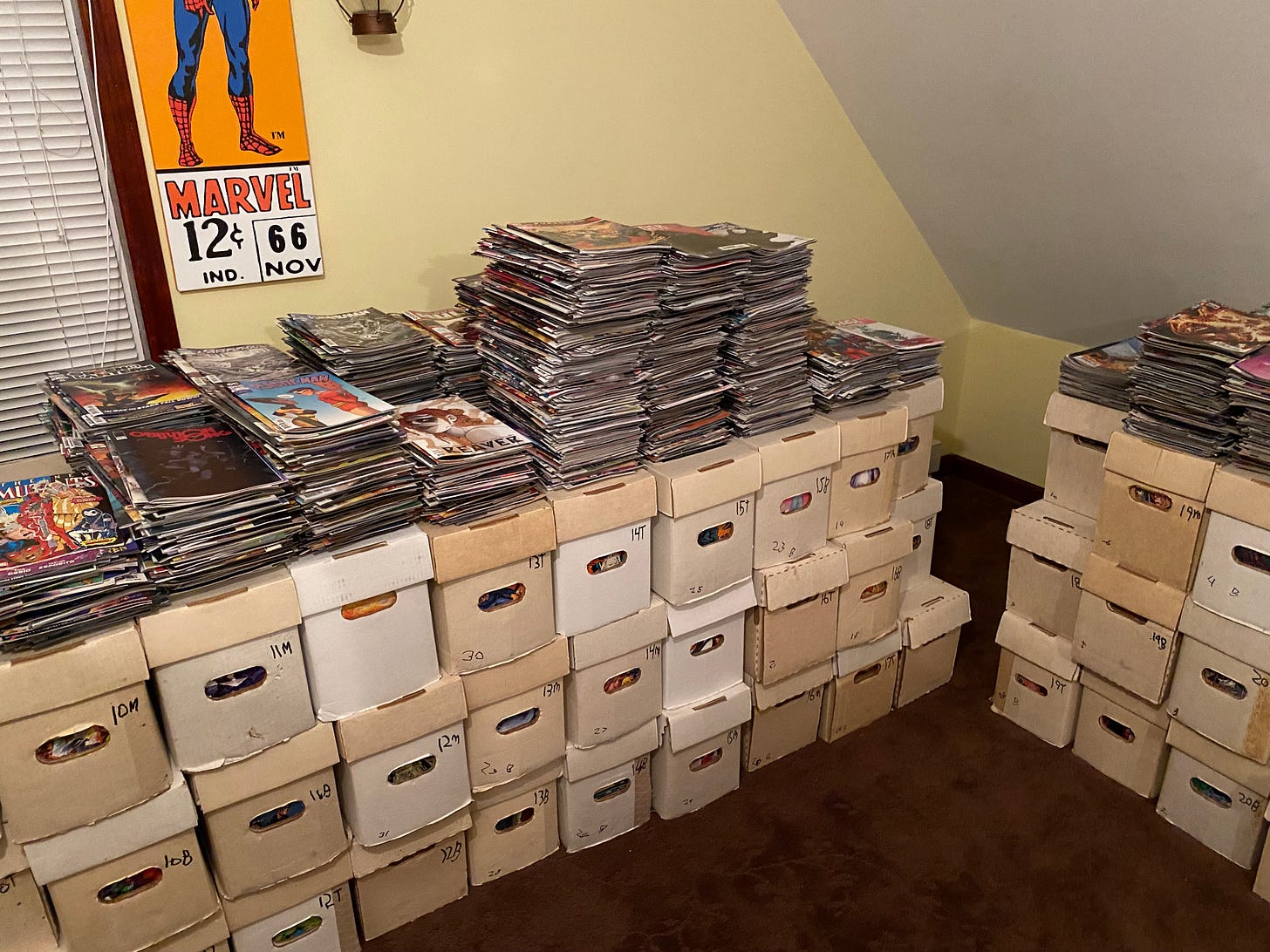
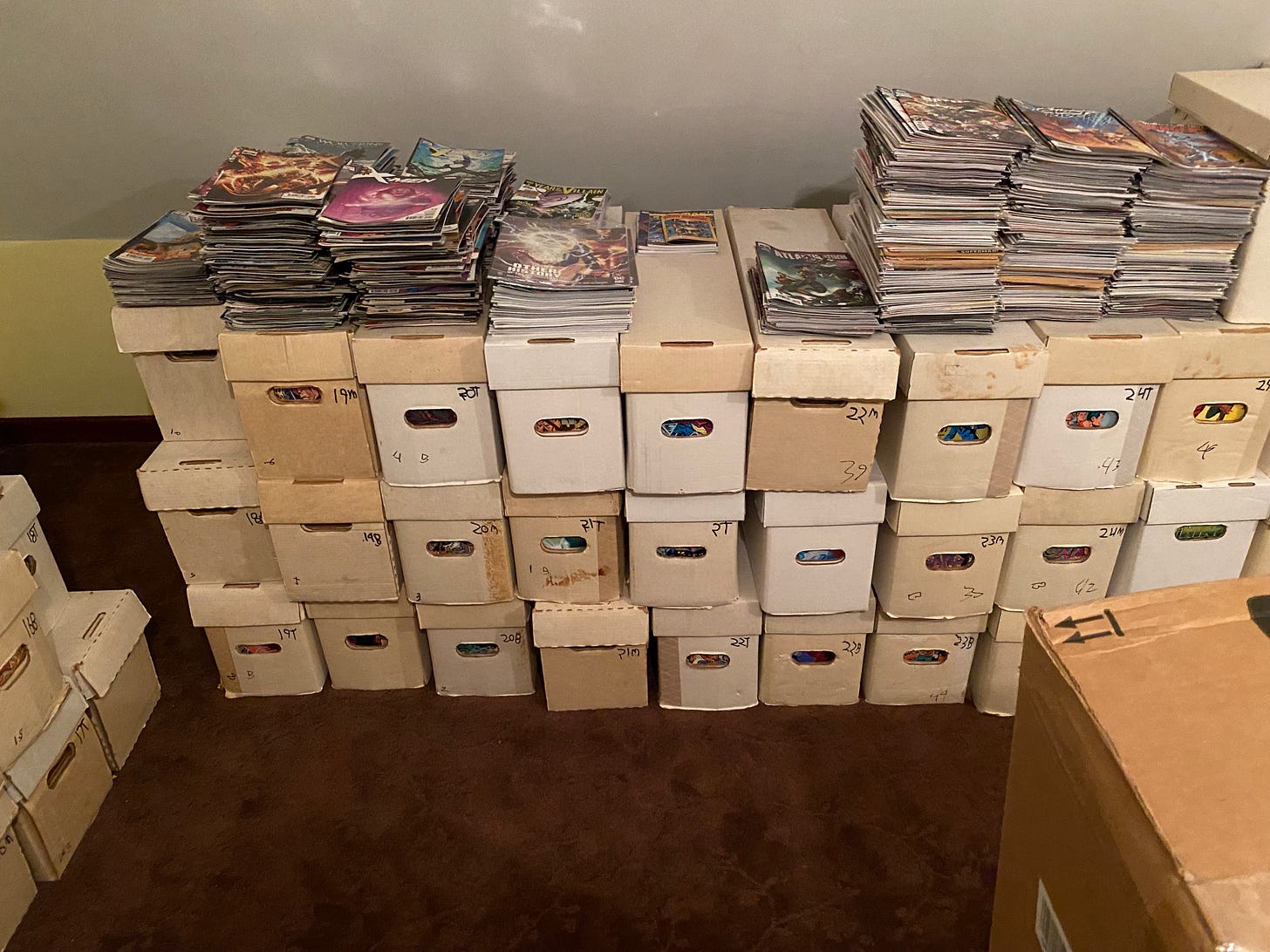
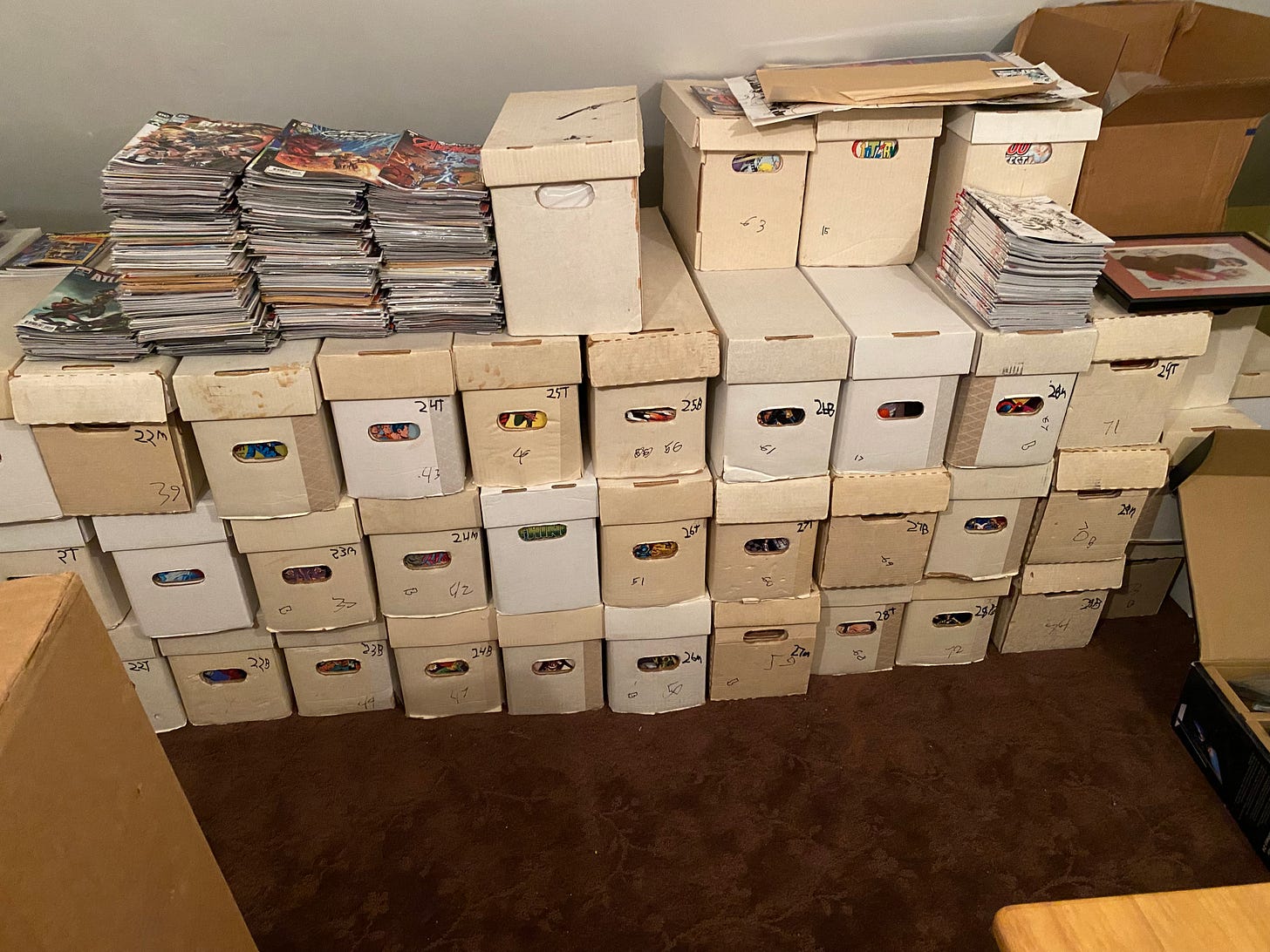

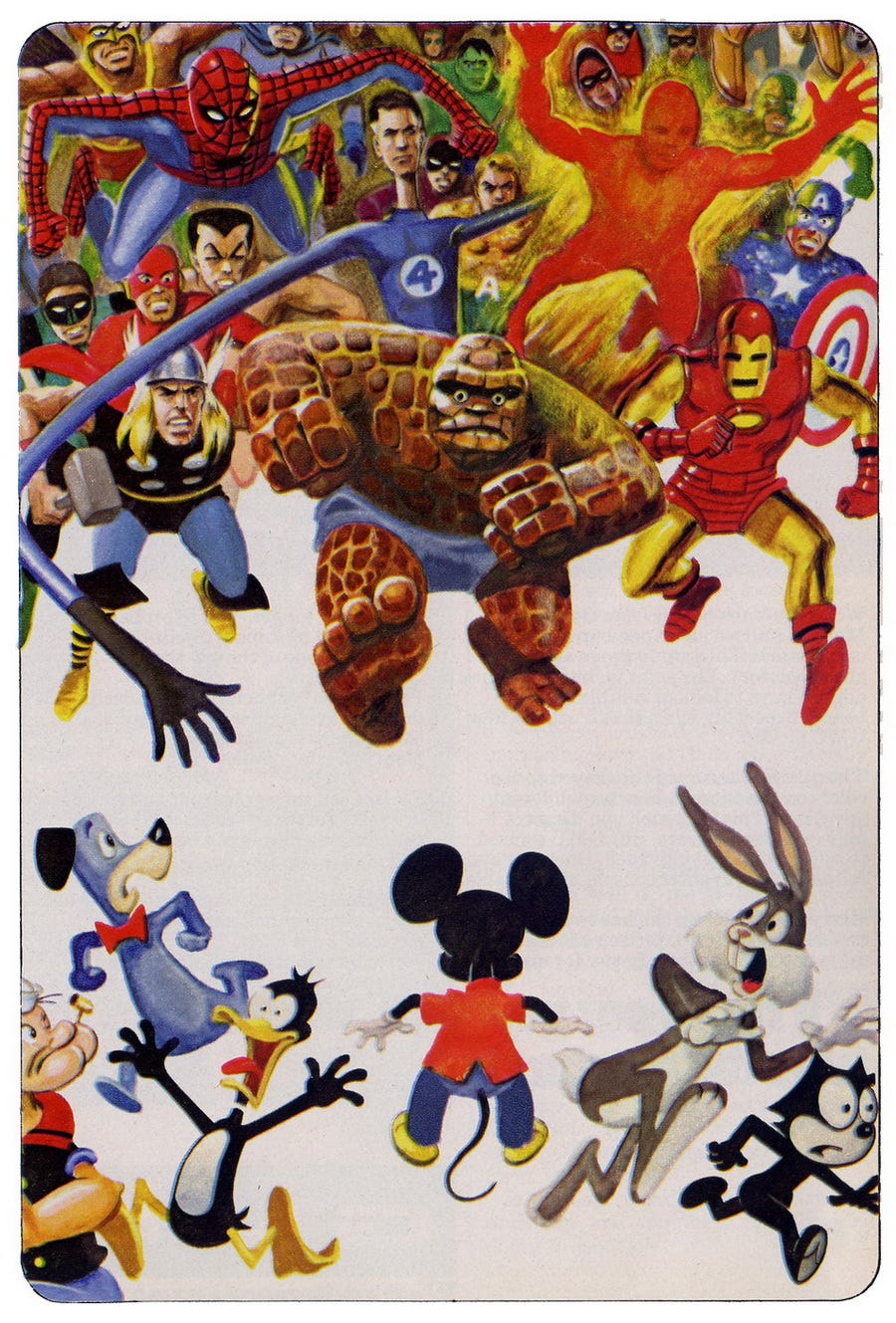

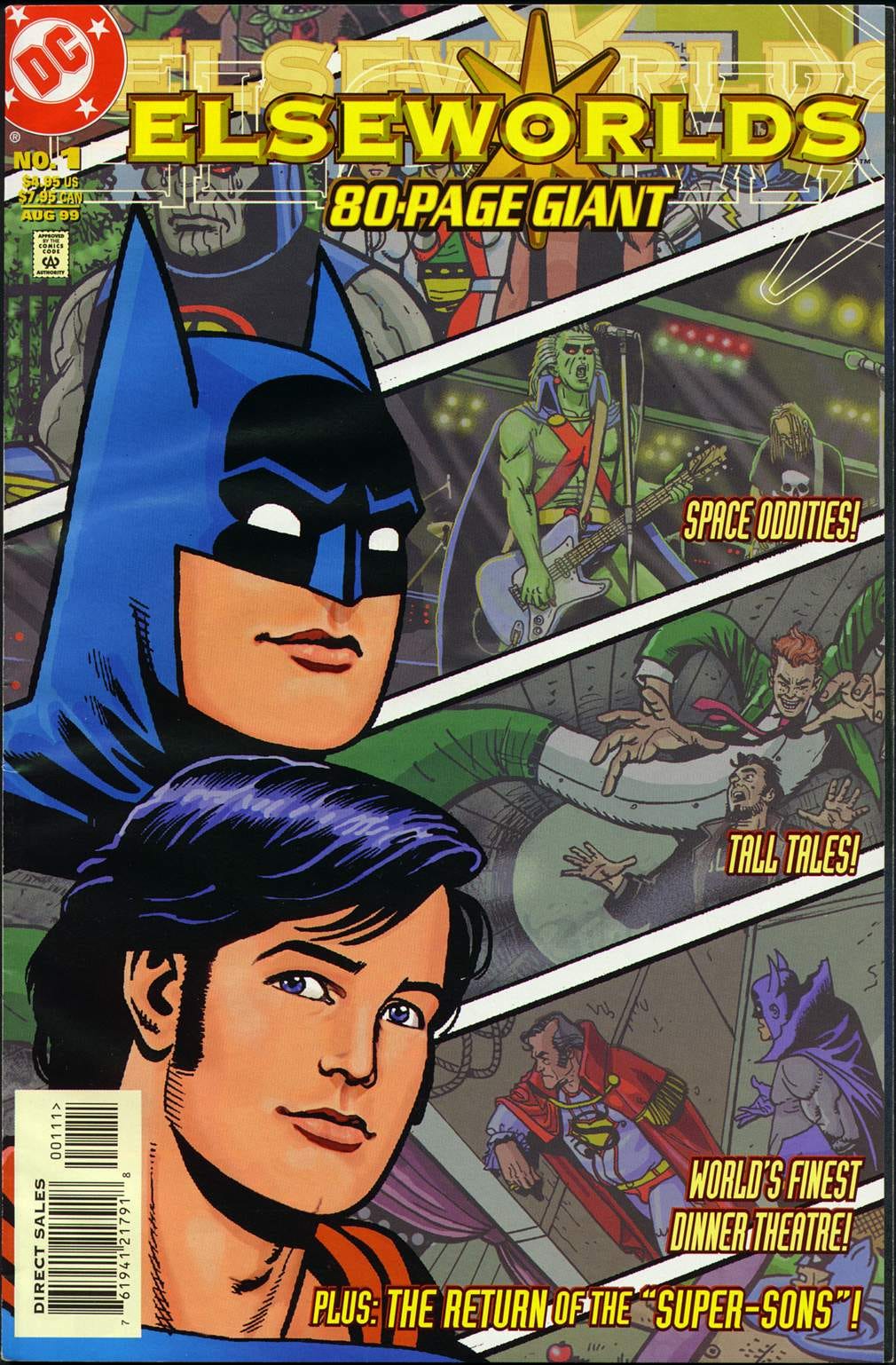
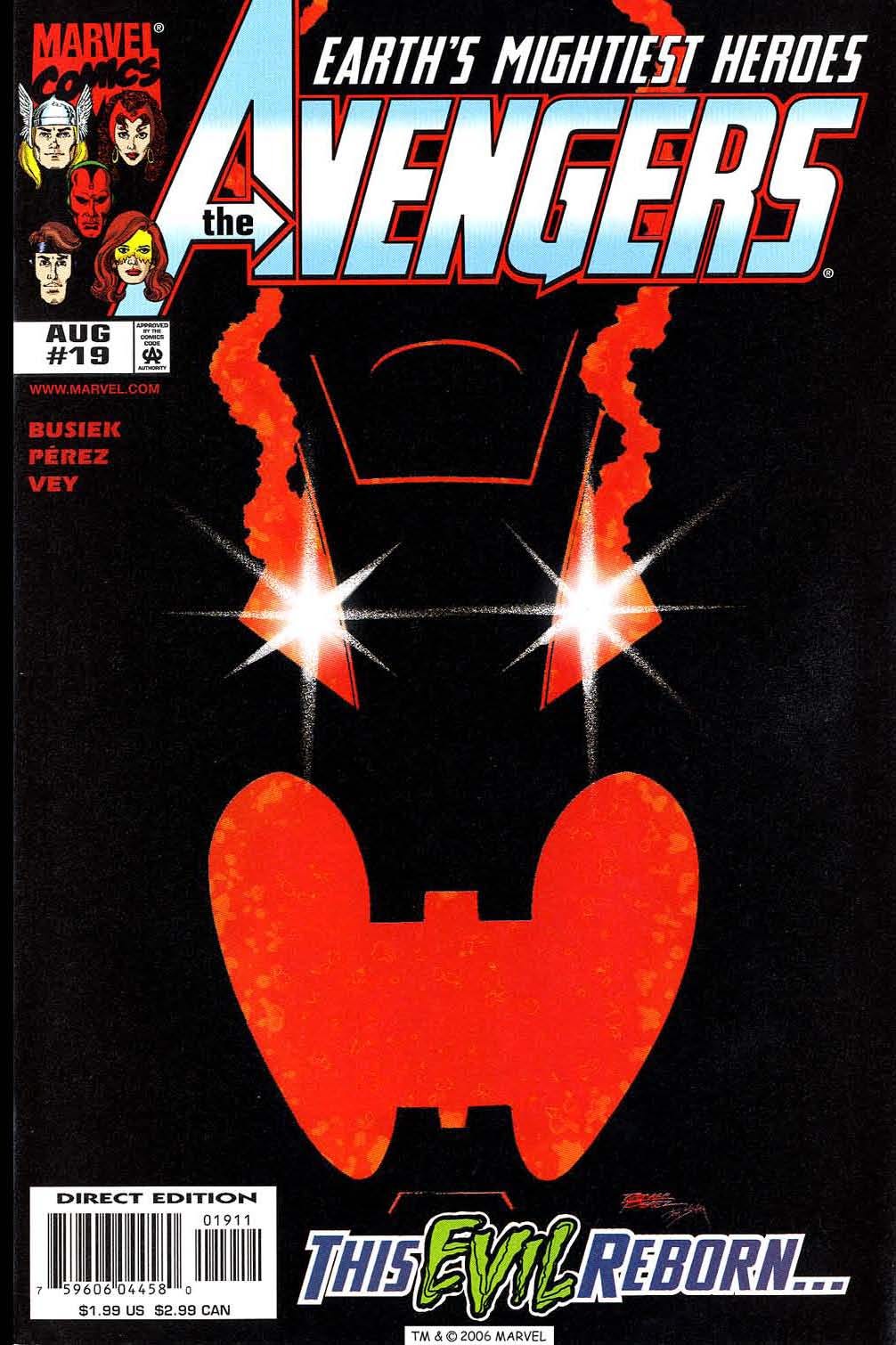

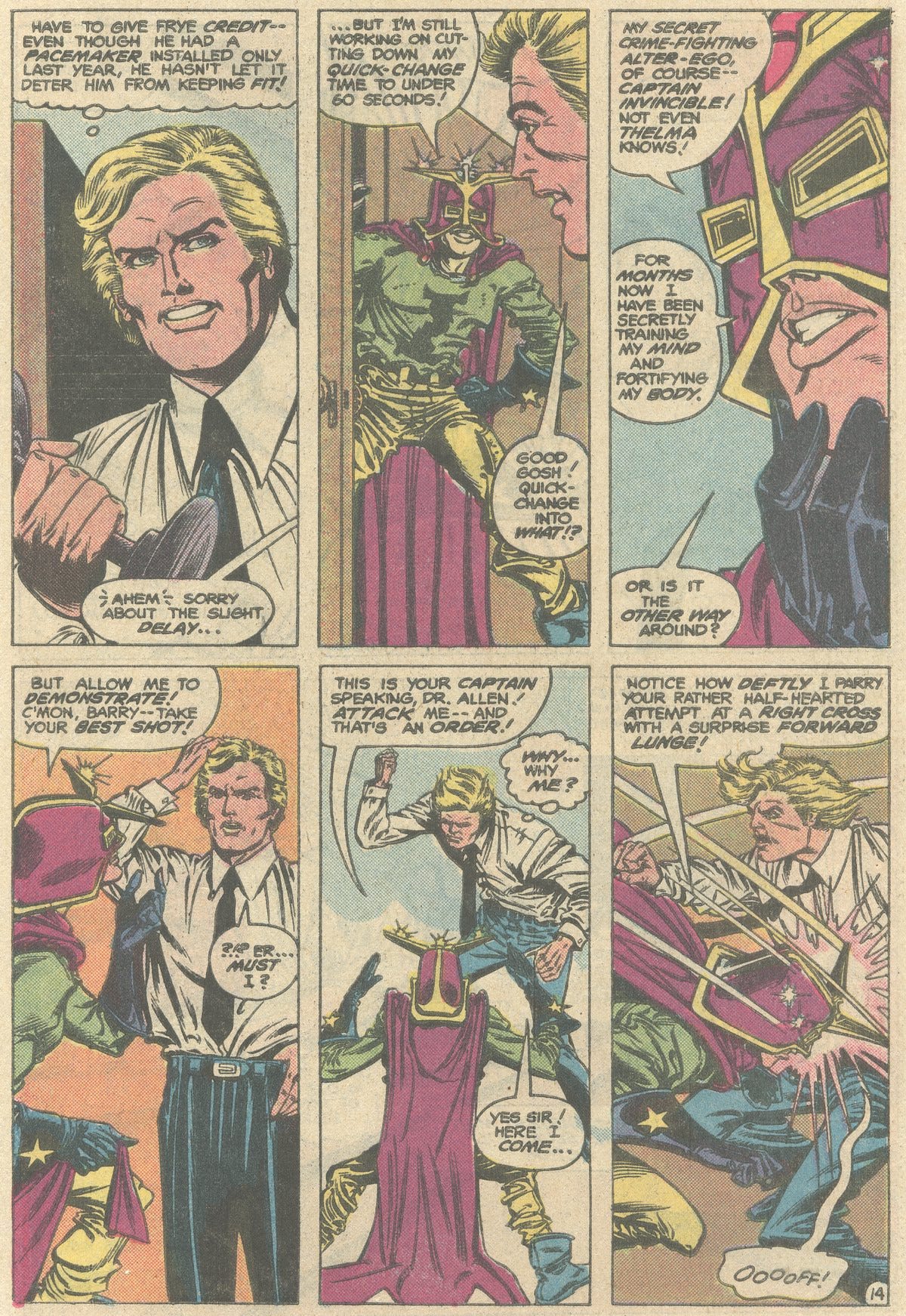
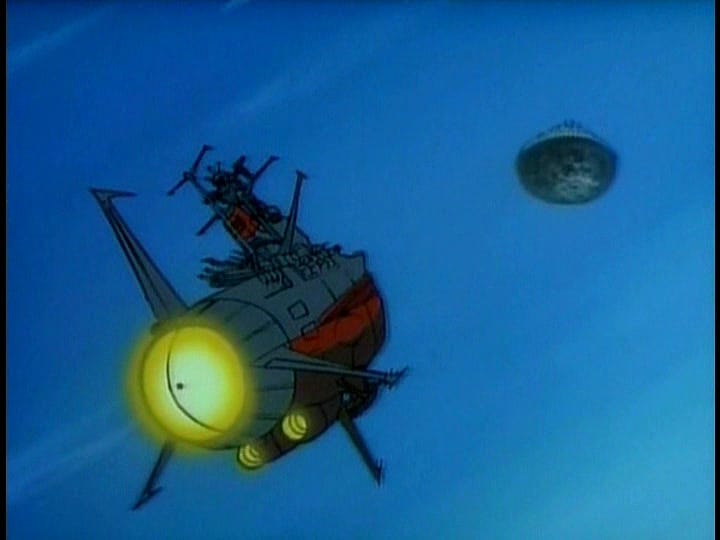
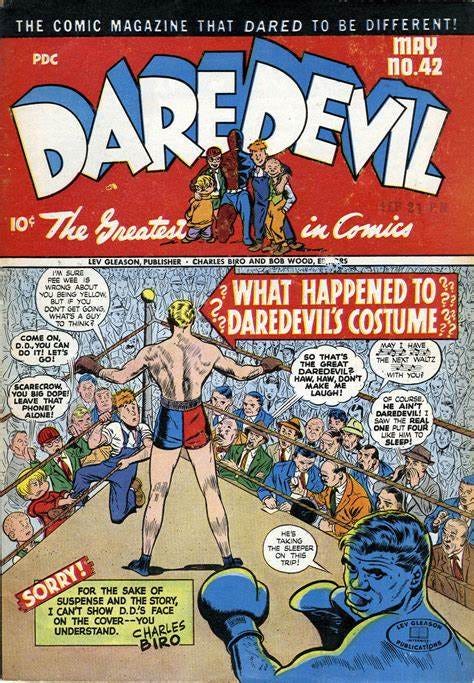
“ So might I suggest giving those Chip Zdarsky BATMAN comics a rest, maybe?”
I can’t believe you started this newsletter talking about your family emergency so I can’t even be mad about this
Were you expecting X-Men fans to be like this?